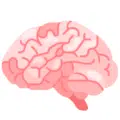Authors:
Melissa C. Palmer, PharmD, BCPS, BCPP
Jessa Marie Koch, PharmD, APh, BCPP
Reviewers:
Kalin M. Clifford, PharmD, BCGP, BCPS
Stuart T. Haines, PharmD, BCPS, BCACP
Citation: Mok PLH, Carr MJ, Guthrie B, et al. Multiple adverse outcomes associated with antipsychotic use in people with dementia: population based matched cohort study. BMJ. 2024;385:e076268.
The Problem
By 2050, an astounding 150 million people globally are projected to be living with dementia, presenting a profound challenge to healthcare systems worldwide.1 One of the most debilitating aspects of the disease is the prevalence of behavioral and psychological symptoms of dementia (BPSD), which impacts nearly 90% of patients.2 These symptoms significantly diminish the quality of life and functional abilities of those affected. To combat the most severe of these symptoms, antipsychotic medications are often prescribed, but not without possibly harmful consequences. Given the frequency with which these patients and their healthcare advocates seek treatment, there is a need for a deeper understanding of BPSD management to improve patient care and outcomes.

 iForumRx.org is a web-based community of practice designed to inform ambulatory care pharmacy specialists, pharmacy residents, and student pharmacists about high-quality, practice-changing evidence.
iForumRx.org is a web-based community of practice designed to inform ambulatory care pharmacy specialists, pharmacy residents, and student pharmacists about high-quality, practice-changing evidence.